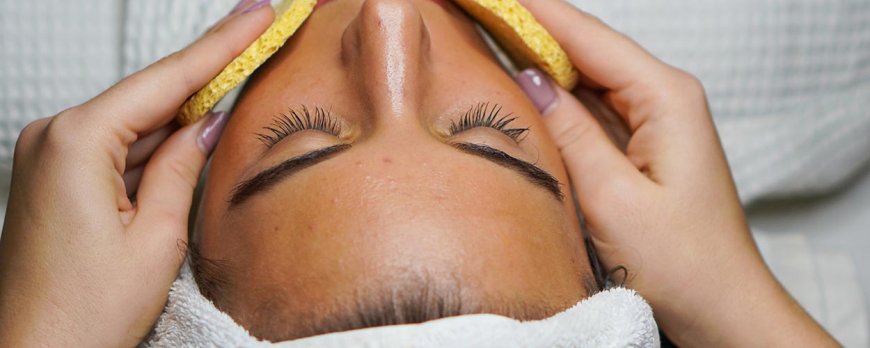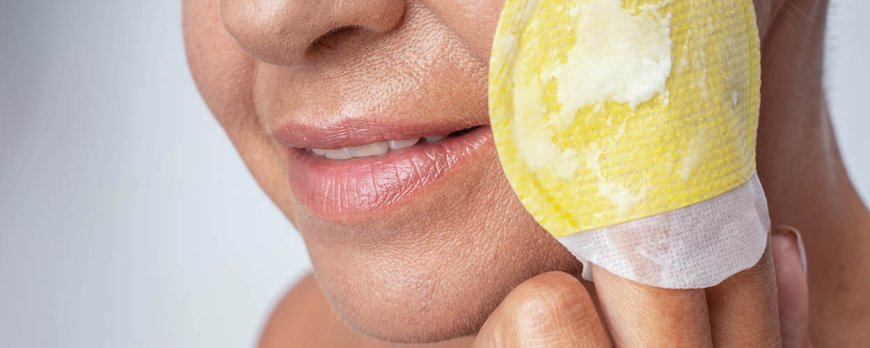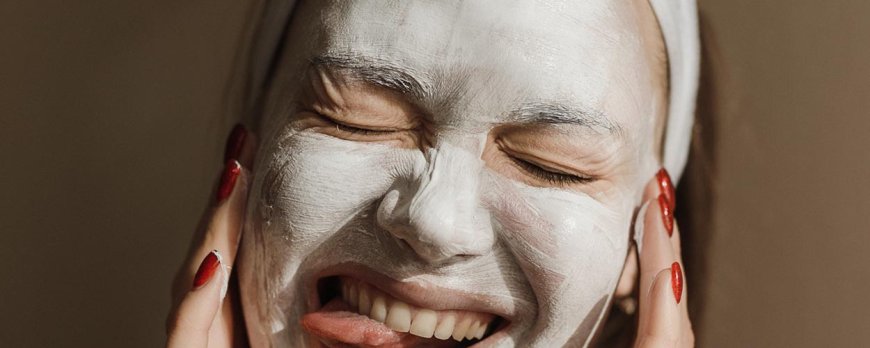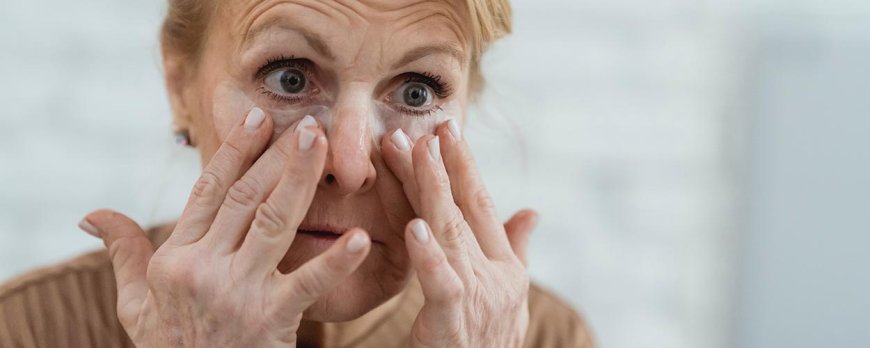What diseases change your face?
Discover what diseases change your face, their symptoms, and how to recognize them. Make informed health decisions with our comprehensive guide.

What diseases change your face?
Discover the diseases that can cause noticeable changes in your face and learn how to identify their symptoms. Certain diseases can affect the appearance of your facial features, serving as potential indicators of underlying health conditions. Recognizing these facial changes is crucial for prompt diagnosis and appropriate medical intervention. In this article, we will explore various diseases and their associated facial symptoms, empowering you with knowledge to prioritize your health and seek proper treatment.
Key Takeaways:
- Jaundice, characterized by yellowing of the skin and eyes, may be a sign of liver or gallbladder problems.
- Spots or bumps on the skin can be a potential sign of skin cancer and should be monitored closely.
- Cold sores around the mouth are caused by the herpes virus and can be effectively managed and treated.
- Dry or cracked lips may indicate dehydration or an allergic reaction, emphasizing the importance of staying hydrated and seeking medical advice.
- A butterfly-shaped rash on the cheeks can be associated with lupus and requires medical evaluation for proper management.

Jaundice: A sign of liver or gallbladder problems
Jaundice can change the appearance of your face and may be a sign of underlying liver or gallbladder problems. When the liver is not functioning properly, it can lead to a buildup of bilirubin, a yellow pigment, in the body. This excess bilirubin can cause a yellowing of the skin and eyes, giving the face a distinct yellow hue.
In addition to the change in skin tone, jaundice may also be accompanied by other symptoms such as dark urine, pale stools, fatigue, and abdominal pain. These symptoms can indicate various liver or gallbladder conditions, such as hepatitis, cirrhosis, or gallstones.
If you notice any changes in the color of your skin or eyes, it is important to seek medical attention. A healthcare professional can evaluate your symptoms, perform diagnostic tests, and provide appropriate treatment for the underlying liver or gallbladder problem.
Skin spots and bumps: Potential signs of cancer
Changes in your facial skin, such as the presence of spots or bumps, can be potential signs of skin cancer. It is important to monitor your skin regularly and seek medical attention if you notice any concerning changes.
There are different types of skin spots and bumps that can indicate the possibility of skin cancer. These include:
- Moles: Moles that change in size, shape, color, or texture should be evaluated by a healthcare professional. They may be a sign of melanoma, the most serious form of skin cancer.
- Red or pink patches: Patches of skin that are raised, rough, or scaly may be a sign of basal cell carcinoma or squamous cell carcinoma, the two most common types of non-melanoma skin cancer.
- Bumps or nodules: Raised, firm, and shiny bumps or nodules on the skin can be a sign of basal cell carcinoma. These may sometimes have a small depression in the center and can bleed or crust over.
If you notice any of these changes in your facial skin, it is essential to consult a healthcare professional. Early detection and timely treatment can significantly increase the chances of successful outcomes. Remember to protect your skin from the sun's harmful UV rays by wearing sunscreen, seeking shade, and wearing protective clothing.

Cold sores: A result of the herpes virus
Cold sores on the face are commonly caused by the herpes virus and can cause noticeable changes in your facial appearance. These small, fluid-filled blisters typically appear around the mouth or on the lips. They can be red, swollen, and painful, causing discomfort and self-consciousness.
The herpes virus is highly contagious and can be easily spread through direct contact with an active cold sore. Once infected, the virus can remain dormant in your body and may reactivate periodically, leading to recurring cold sores.
When a cold sore outbreak occurs, it is important to take proper precautions to prevent the virus from spreading to others. Avoid close contact, such as kissing or sharing utensils, and wash your hands regularly. Over-the-counter creams and ointments can help alleviate symptoms and promote healing, but it is advisable to consult a healthcare professional for proper diagnosis and treatment.
Managing and preventing cold sore outbreaks can be challenging, but there are steps you can take to minimize their occurrence. Maintaining a healthy lifestyle, managing stress levels, and avoiding triggers such as prolonged sun exposure or a weakened immune system can help reduce the frequency and severity of cold sores.

Dry or Cracked Lips: Indicators of Dehydration or Allergies
Dry or cracked lips can be an indication of underlying health conditions such as dehydration or allergies. When the lips lack moisture, they can become dry, flaky, and uncomfortable. Dehydration is a common cause of dry lips, as the body needs an adequate amount of water to maintain its hydration levels. If you're not drinking enough water throughout the day, it can result in dryness not only on the lips but also in other parts of the body.
Allergies can also contribute to dry or cracked lips. When the body reacts to certain allergens, it can cause inflammation and dryness in various areas, including the lips. Allergic reactions can be triggered by substances like certain medications, certain foods, or even environmental factors such as dry air or exposure to harsh weather conditions.
Signs of Dehydration:
- Thirst
- Dry mouth
- Dark-colored urine
- Reduced urine output
- Dizziness or lightheadedness
Signs of Allergic Reaction:
- Itchy or swollen lips
- Rash or hives around the mouth
- Tingling or burning sensation
- Watery or red eyes
- Sneezing or runny nose
If you experience persistent dry or cracked lips, it's important to seek medical advice. A healthcare professional can evaluate your symptoms, determine the underlying cause, and provide appropriate treatment or management options. They may recommend drinking more water to stay hydrated or prescribe medications to alleviate allergic reactions. Remember, proper diagnosis and professional guidance are vital to address any potential health concerns related to dry or cracked lips.

Butterfly-shaped rash: A potential sign of lupus
If you notice a butterfly-shaped rash on your cheeks, it may be a potential sign of lupus and should be assessed by a healthcare professional. This distinctive rash, called a butterfly rash due to its shape, is often one of the first signs of lupus, an autoimmune disease that can affect various parts of the body including the skin, joints, and organs.
The butterfly rash typically appears as a red or pinkish rash that covers the bridge of the nose and spreads across the cheeks, resembling the wings of a butterfly. It is usually flat or raised, but it is not typically itchy or painful. The rash may come and go, or it can be persistent. In some cases, exposure to sunlight can worsen the rash.
While a butterfly rash can be an indication of lupus, it is important to remember that not everyone who has this rash will have the disease. However, if you notice this distinctive facial rash, it is crucial to seek medical evaluation for an accurate diagnosis. A healthcare professional will evaluate your symptoms, medical history, and perform diagnostic tests to determine if lupus or another underlying condition is causing the rash.
Other facial changes associated with lupus:
- Red, raised patches or a scaly rash on the face and scalp
- Small mouth or nose ulcers
- Sensitivity to sunlight
- Raynaud's phenomenon, where fingers or toes turn white or blue in response to cold or stress
If you experience any of these symptoms alongside the butterfly rash, it is important to discuss them with your healthcare provider for further evaluation and appropriate treatment.
Facial hair growth: A symptom of polycystic ovary syndrome (PCOS)
Excessive facial hair growth can be a symptom of polycystic ovary syndrome (PCOS), a hormonal condition that requires medical evaluation. PCOS is a common endocrine disorder that affects women of reproductive age. It is characterized by hormonal imbalances, leading to various symptoms, including facial hair growth.
Women with PCOS may experience an increase in androgen levels, such as testosterone, which can result in the growth of coarse, dark facial hair. This excess hair growth, also known as hirsutism, typically appears on the chin, upper lip, and cheeks. While some hair growth is normal for many women, excessive or abnormal hair growth may be a cause for concern.
To diagnose PCOS, healthcare professionals may evaluate the symptoms, perform blood tests to measure hormone levels, and conduct an ultrasound to examine the ovaries. Treatment options for PCOS aim to manage symptoms and hormonal imbalances. This may include lifestyle changes, such as maintaining a healthy weight through diet and exercise, as well as medications to regulate hormone levels and improve symptoms.
If you are experiencing excessive facial hair growth or other symptoms associated with PCOS, it is important to consult with a healthcare professional for proper diagnosis and guidance. They can provide personalized recommendations and treatment options to help manage the condition effectively.

Drooping Eyelids: A Sign of Brain, Nerve, or Eye Socket Problems
Drooping eyelids can be a sign of underlying brain, nerve, or eye socket problems and should be assessed by a healthcare professional. This condition, known as eyelid droopiness or ptosis, can affect one or both eyelids and may cause difficulty in fully opening the eyes.
When drooping eyelids occur, it can be an indication of various underlying issues. Brain problems, such as a stroke or nerve disorders like Bell's palsy, can lead to eyelid droopiness. In addition, problems within the eye socket, such as injury or tumors, can also cause this condition.
Common Causes of Drooping Eyelids:
- Stroke
- Bell's palsy
- Nerve damage
- Neurological disorders
- Eye socket abnormalities
- Tumors
It is important to consult a healthcare professional if you notice drooping eyelids, as they can help determine the underlying cause and recommend appropriate treatment options. Depending on the diagnosis, treatment may include medications, surgery, or interventions to manage the underlying condition.
If you experience any other accompanying symptoms along with drooping eyelids, such as vision changes, double vision, or eye pain, it is crucial to seek immediate medical attention. Your healthcare provider will be able to conduct a comprehensive evaluation and provide the necessary guidance for your specific situation.
Facial Paralysis: A Sign of Bell's Palsy or Stroke
Facial paralysis can indicate underlying conditions such as Bell's palsy or stroke and requires immediate medical attention. This condition can lead to the inability to control facial muscles on one side of the face, resulting in a drooping or sagging appearance.
If you experience sudden facial weakness or paralysis, it is crucial to seek prompt medical evaluation. Bell's palsy is a common cause of facial paralysis, often resulting from inflammation or damage to the facial nerve. While the exact cause is uncertain, viral infections, such as the herpes simplex virus, are believed to play a role in its development.
On the other hand, facial paralysis can also be a symptom of a stroke, a serious medical emergency. A stroke occurs when there is a disruption in the blood supply to the brain, leading to brain cell damage. When facial paralysis is accompanied by other stroke symptoms like slurred speech, confusion, or weakness on one side of the body, it is essential to call emergency services immediately.
Recognizing the Symptoms
Being aware of the symptoms associated with facial paralysis is crucial for early detection and appropriate treatment. If you experience sudden weakness or paralysis on one side of the face, difficulty closing the eye or mouth, drooling, a drooping appearance, or changes in taste perception, it is essential to consult a healthcare professional without delay.
The medical evaluation may involve a thorough examination, including imaging tests like magnetic resonance imaging (MRI) or computed tomography (CT) scans. Treatment options for Bell's palsy may include corticosteroids, antiviral medication, and physical therapy. In the case of a stroke, immediate medical intervention is necessary to restore blood flow to the affected area of the brain and prevent further damage.
Although facial paralysis can be a distressing experience, early diagnosis and appropriate treatment can lead to better outcomes. If you or someone you know is experiencing facial weakness or paralysis, do not hesitate to seek medical attention right away. Remember, timely intervention is essential for effective management and recovery.

Other facial changes and their potential implications
Other facial changes, including raised yellow bumps on the eyelids, puffy or swollen eyes, gray-brown patches of skin, and hair loss on the eyebrows or eyelashes, can have potential implications and should be evaluated by a healthcare professional. These changes may signify underlying health conditions that require proper diagnosis and treatment.
If you notice raised yellow bumps on your eyelids, known as xanthelasmata, it could be a sign of a higher risk for heart disease. These fatty deposits can indicate abnormal lipid metabolism and should not be ignored. Seeking medical evaluation can help determine the appropriate steps to manage your cardiovascular health.
Puffy or swollen eyes can be caused by various factors, including fluid retention. While it can be a common occurrence after a restless night or due to allergies, persistent swelling around the eyes could indicate an underlying health issue. Consulting with a healthcare professional can help identify the cause and provide appropriate treatment options.
Gray-brown patches of skin on the face, known as melasma, can be triggered by factors like pregnancy or certain medications. Although it is a harmless condition, it can cause cosmetic concerns. Speaking with a healthcare professional can help manage the appearance of melasma and determine if any underlying health issues need to be addressed.
Losing hair on the eyebrows or eyelashes might be a sign of alopecia areata, an autoimmune condition that affects hair follicles. While it may not cause any major health problems, it can impact self-esteem and quality of life. Seeking medical advice can help manage hair loss and provide guidance on available treatment options.
Conclusion
Understanding the diseases that can change your face is crucial for recognizing facial symptoms and making informed health decisions. Certain changes in the face, such as jaundice, spots or bumps on the skin, cold sores, dry or cracked lips, a butterfly-shaped rash, facial hair growth, drooping eyelids, facial paralysis, xanthelasmata, puffy or swollen eyes, melasma, and hair loss on the eyebrows or eyelashes, can be indicative of underlying health conditions.
If you notice any of these facial changes, it is important to consult a healthcare professional for proper diagnosis and treatment. These changes may signify liver or gallbladder problems, skin cancer, herpes virus infection, dehydration or allergies, lupus, polycystic ovary syndrome (PCOS), issues with the brain, nerves, or eye socket, Bell's palsy or stroke, an increased risk for heart disease, fluid retention, or conditions like melasma or alopecia areata.
By seeking medical attention and getting an accurate diagnosis, you can take appropriate steps to manage these conditions and improve your overall health. Remember to pay attention to any changes in your face and take proactive measures to maintain your well-being.
FAQ
What diseases can cause changes in the face?
Certain diseases can cause changes in the face, which can be indicative of underlying health conditions. Some of these changes include jaundice, spots or bumps on the skin, cold sores around the mouth, dry or cracked lips, a butterfly-shaped rash on the cheeks, facial hair growth, drooping eyelids, facial paralysis, raised yellow bumps on the eyelids called xanthelasmata, puffy or swollen eyes, gray-brown patches of skin known as melasma, and hair loss on the eyebrows or eyelashes. These changes should be evaluated by a healthcare professional for proper diagnosis and treatment.
What is jaundice and what does it indicate?
Jaundice is a condition that causes yellowing of the skin and eyes. It is often a sign of liver or gallbladder problems and should be evaluated by a healthcare professional for further investigation and treatment.
Can spots or bumps on the skin be a sign of cancer?
Yes, spots or bumps on the skin can potentially be a sign of skin cancer. It is important to monitor any changes in the skin and consult with a healthcare professional if necessary.
What causes cold sores around the mouth?
Cold sores around the mouth are caused by the herpes virus. They can be managed and treated effectively with appropriate medications and lifestyle choices.
What can dry or cracked lips indicate?
Dry or cracked lips can be a sign of dehydration or an allergic reaction. It is important to stay hydrated and consult with a healthcare professional for persistent lip issues.
What does a butterfly-shaped rash on the cheeks indicate?
A butterfly-shaped rash on the cheeks can be a potential sign of lupus. It is important to seek medical evaluation and treatment for proper management of this condition.
Is facial hair growth a symptom of any specific health condition?
Excessive facial hair growth can be a symptom of polycystic ovary syndrome (PCOS). It is recommended to seek medical advice for diagnosis and management of this condition.
What do drooping eyelids indicate?
Drooping eyelids can be a sign of problems with the brain, nerves, or eye socket. It is important to seek medical evaluation to determine the underlying cause.
What does facial paralysis indicate?
Facial paralysis can be a sign of Bell's palsy or a stroke. It is crucial to seek immediate medical attention for facial paralysis to determine the cause and receive appropriate treatment.
What do raised yellow bumps on the eyelids called xanthelasmata indicate?
Raised yellow bumps on the eyelids, known as xanthelasmata, can be a sign of a higher risk for heart disease. It is important to consult with a healthcare professional for further evaluation and guidance.
Why do my eyes appear puffy or swollen?
Puffy or swollen eyes can be caused by fluid retention. It is advisable to consult with a healthcare professional to determine the underlying cause.
What are gray-brown patches of skin on the face called?
Gray-brown patches of skin on the face are known as melasma. They can be triggered by factors such as pregnancy or certain medications. It is important to consult with a healthcare professional for proper diagnosis and management.
Why am I experiencing hair loss on my eyebrows or eyelashes?
Hair loss on the eyebrows or eyelashes can be a sign of alopecia areata. It is recommended to seek medical evaluation for proper diagnosis and treatment.


































































































































